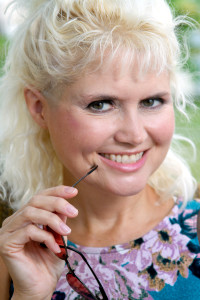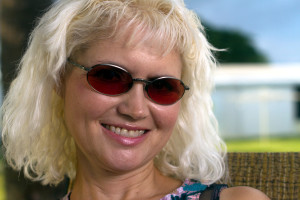Free Photography Bundle ($180 value): PS actions, LR presets, photo overlays, & print templates!
Get it here.
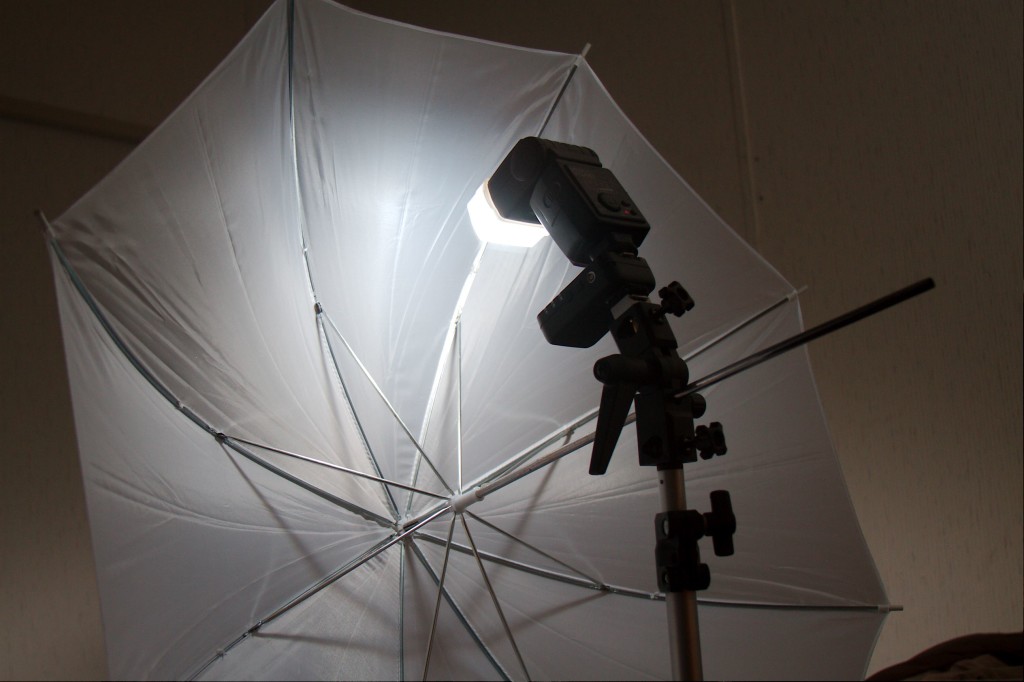
An introductory lighting setup for portrait photography. A portable strobe, wireless controller and shoot-through white umbrella.
Introductory portrait gear is a difficult topic, not because it’s hard to explain but because there are so many ways to approach it. There’s gear for shooting portraits outdoors and, even though you can use the same gear for shooting indoors, it’s arranged somewhat differently. There are one set of recommendations if you’re on a budget and a completely different set if money is not the primary concern. Another difficult corner to navigate is that all portrait photography is not created equal.
Fashion photography is a form of portrait photography and, sometimes, the lighting styles will intersect with more traditional portrait lighting. More often a fashion photographer is seeking a different look that will require both special lighting and advanced post processing techniques.
So to get anywhere in an introductory article one must make some assumptions about what the audience wants. If you’re not on a budget, this article may not be your best resource. Get yourself a Bowens, Profoto or Elinchrom catalog and have fun. Likewise if you’re building a home studio, that will have to wait for another article. Today we’ll cover basic portrait gear for shooting stock head and shoulders shots either outdoors or indoors up close.
Basic Gear Starts With a Reflector
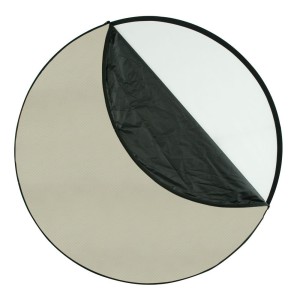
This 50 in reflector by Wescott is one of the most useful items you can have for shooting portraits outdoors.
The most useful and versatile piece for portrait photography is a basic five-way reflector. A five-way reflector has silver, gold, black and white surfaces plus a white translucent center panel that can either be used as flat white reflector or a scrim to cut down on direct light. The type at least 43 inches across with handles on the side are very useful and easier to keep a grip when the wind is blowing.
Strobes
The most useful strobes you can start with are portable strobes of the type that have a hotshoe on the bottom and can be used on a light stand with a wireless trigger or mounted on your camera. You’ll need at least one good portable flash, having two is better but if you have a reflector that can cover for the second flash outdoors. If you want to go inside, you’ll need at least two strobes and some kind of spotlight to use for hair and highlights.
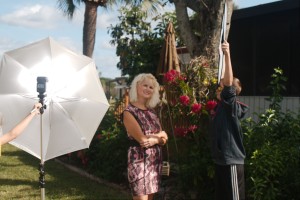
The portable umbrella/flash combination with the reflector being used as a scrim to cut the direct sun on the subject.
Umbrellas and Softboxes
When it comes to using portable strobes as a light source, you can use either umbrellas or softboxes to diffuse the light from the flash. My personal preference are umbrellas because you can configure them as either shoot-through or as a reflective surface. With a softbox you are pretty much limited to one standard mode of operation. Umbrellas also cost a lot less and, if you ever break one, you won’t lose any sleep over a $20 gadget you can replace in a couple days.
Wireless Controllers
You can get the really expensive ones with electronic TTL compatibility or you can get the dumb wireless controllers that just fire the flash. The compromise products are wireless controllers by Yongnuo which have limited e-TTL and i-TTL compatibility for both Canon and Nikon cameras. For getting started, the dumb wireless controllers, which run anywhere from $20 to $40, actually work pretty well. For most portraits your subjects are not moving a lot or trying to get away, so you have some time to make adjustments to the flash power manually. Since you’re usually not moving a great distance with portable strobes, that manual adjustment is far less difficult. Sure it’s nice to have groups and power controls but unless you’re certain you’ll be using all that capability, that functionality comes at a steep price.
Lenses
You can get started shooting portraits with just about any lens in your bag. Prime lenses work as well for portrait photography as they do for landscape photography, though sometimes you want to employ a longer lens for portrait photography which makes it easier to throw the background out of focus. Lenses like the very reasonably priced Bower 85mm manual lens offer compelling clarity and value at minimum cost. If you want to spend a little more and get autofocus, which is handy to have, you have many excellent choices from brands such as Canon, Nikon and Sigma.
As mentioned above, this is far too big of a topic to cover in one article, but the gear outlined here will get you off to a good start without breaking the bank financially.
For inspiration and ideas please see:
- 44 Fabulous Examples of Portrait Photography
- 25 Incredible Close Up Portraits
- 15 Props that Make Your Photos Pop
Please see our similar article, Introductory Gear for Landscape Photography.
